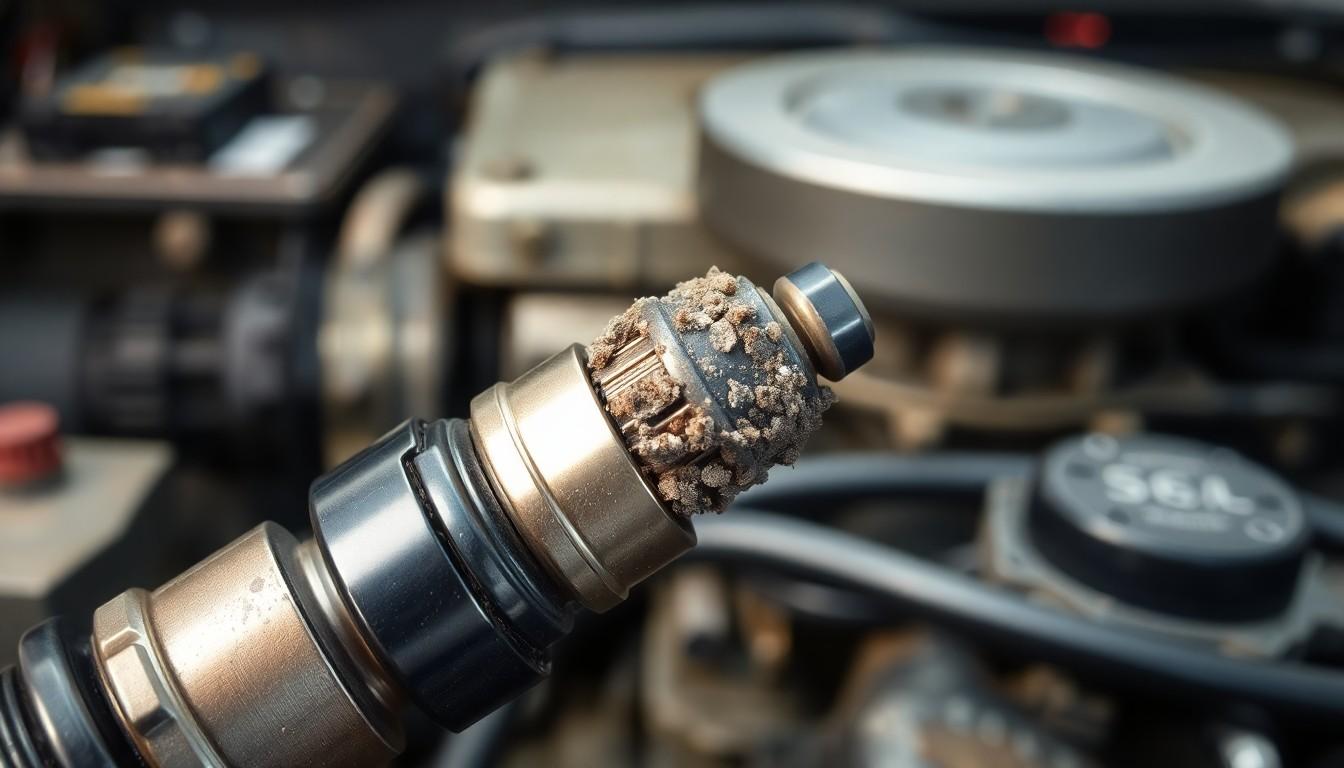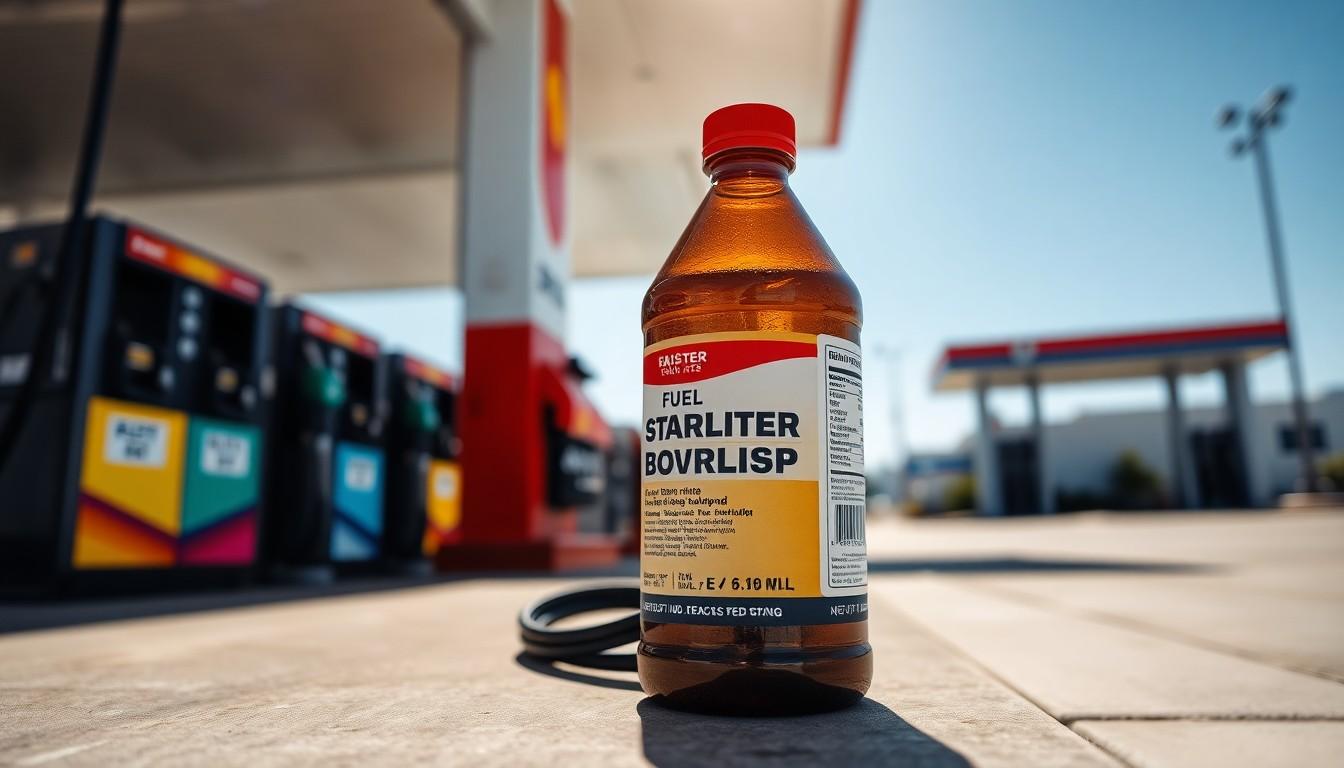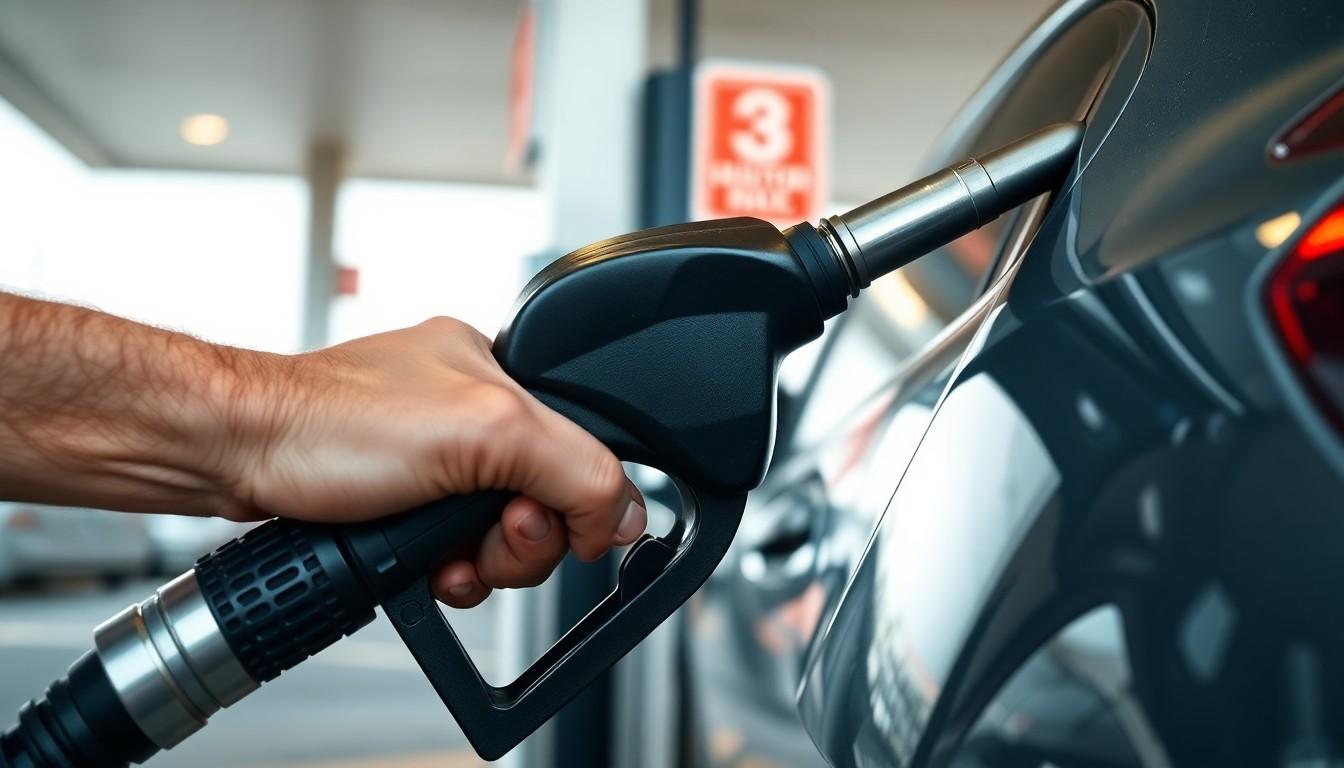Ever filled up your tank only to have your car start sputtering and hesitating shortly after? Bad gas can wreak havoc on your vehicle’s performance, often faster than you might expect. We’ll explore exactly how quickly contaminated fuel can affect your car and what signs to watch for.
The truth is, bad gasoline can impact your vehicle almost immediately or take several days to show symptoms, depending on various factors like the type of contamination and your car’s make and model. Understanding this timeline isn’t just helpful—it’s essential for protecting your engine and avoiding costly repairs.
Understanding Bad Gas and Its Impact on Vehicles
Bad gas refers to contaminated or degraded fuel that doesn’t meet standard quality specifications. Fuel contamination occurs in various forms, including water intrusion, dirt particles, microbial growth, or improper ethanol mixing. These contaminants significantly alter the chemical composition of gasoline, rendering it less effective and potentially harmful to your vehicle’s engine components.
Types of Fuel Contamination
Water contamination ranks among the most common issues in gasoline. It enters fuel tanks through condensation or during refueling in rainy conditions. Dirt and debris often find their way into gas tanks during refueling or through compromised fuel systems. Microbial growth thrives in fuel tanks with water presence, creating a slimy substance that clogs filters and injectors. Old gasoline deteriorates over time, losing its combustible properties and forming harmful deposits in the fuel system.
Signs Your Car Has Bad Gas
Engine performance issues signal the presence of bad gas immediately. Your vehicle might struggle to accelerate, stall unexpectedly, or run roughly when idling. Frequent misfires indicate fuel isn’t burning properly in the combustion chambers. Decreased fuel efficiency becomes noticeable when your car suddenly requires more frequent refueling. Unusual exhaust emissions, including black smoke or strong odors, point to incomplete combustion from contaminated fuel. Check engine lights often illuminate when sensors detect abnormal combustion or fuel system operation.
How Contaminated Fuel Damages Your Engine
Fuel injectors suffer first when bad gas enters your system. The tiny precision nozzles clog easily with contaminants, disrupting the carefully calibrated spray pattern. Fuel pumps experience increased wear when pumping contaminated fuel, leading to premature failure. Combustion chambers accumulate carbon deposits from incomplete burning, reducing engine efficiency and power. Oxygen sensors and catalytic converters face damage from the improper fuel mixtures, potentially resulting in expensive replacements. Valve deposits form on intake valves when bad fuel doesn’t vaporize correctly, restricting airflow and causing valve seating issues.
Common Signs of Bad Gas in Your Car

Bad gasoline presents several telltale symptoms that alert drivers to fuel quality issues. These signs typically appear within days of filling up with contaminated fuel, though some problems can manifest almost immediately depending on the severity of contamination.
Engine Performance Issues
Engine performance deteriorates noticeably when bad gas enters your fuel system. You’ll experience decreased fuel efficiency as impurities disrupt the optimal fuel-air mixture, forcing your engine to work harder while delivering less power. Stalling becomes common during acceleration or when idling at traffic lights, creating potentially dangerous driving situations. Starting your car becomes increasingly difficult, with the engine cranking longer or requiring multiple attempts before catching. Many drivers also notice hesitation during acceleration as the compromised fuel fails to combust properly, leading to sluggish response when pressing the gas pedal. The check engine light often illuminates as the vehicle’s computer detects irregularities in the combustion process or emissions system, indicating a problem requires attention.
Strange Noises and Vibrations
Unusual sounds and sensations provide clear indications of bad gas affecting your vehicle. Engine sputtering occurs as the fuel burns unevenly, creating distinctive popping or crackling noises during operation. Rough idling manifests as vibrations felt through the steering wheel and seat when the car isn’t moving but remains running. Knocking sounds emerge from the engine compartment when low-quality fuel causes premature detonation in the combustion chambers. Engine overheating becomes increasingly common as varnish from deteriorated gasoline coats vital components, restricting proper heat dissipation. Your exhaust system might emit black smoke or strong odors as unburned fuel passes through due to incomplete combustion. Some vehicles develop a persistent misfire, creating a rhythmic shuddering sensation that’s particularly noticeable at consistent speeds.
How Quickly Bad Gas Affects Your Car

Bad gasoline doesn’t waste time when it comes to harming your vehicle. The timeline of damage ranges from immediate effects to long-term consequences, with symptoms progressively worsening if the contaminated fuel isn’t addressed promptly.
Immediate Effects (Minutes to Hours)
Contaminated fuel can begin affecting your car almost immediately after filling up. Within minutes to hours, your vehicle may experience difficulty starting as the compromised fuel lacks proper combustible properties. Engine sputtering or misfiring often appears quickly, characterized by popping sounds and inconsistent power delivery during acceleration. Your car might stall unexpectedly or hesitate when you press the gas pedal due to incomplete combustion in the engine. Many drivers also notice their check engine light illuminating shortly after introducing bad gas into their tank, serving as an early warning sign of fuel-related problems.
Short-Term Effects (Hours to Days)
As hours turn into days, the symptoms become more pronounced and problematic. Rough idling develops when your engine struggles to maintain consistent combustion at low RPMs. Fuel efficiency decreases noticeably, forcing you to refill your tank more frequently than usual. Automatic transmission vehicles may experience delayed shifting between gears due to inconsistent power delivery from the engine. These effects typically emerge within the first few days of driving with contaminated fuel and continue to worsen without intervention. Your vehicle’s overall performance gradually deteriorates as the bad gas continues circulating through the fuel system.
Long-Term Damage Potential
Without addressing the fuel contamination, serious and costly damage can occur throughout your vehicle’s fuel system and engine. Fuel filters become clogged with contaminants, restricting proper fuel flow to the engine. Fuel injectors suffer damage from particles and debris in the bad gas, leading to expensive replacement needs. Engine emissions increase dramatically while overall engine operation becomes increasingly erratic. The combustion chamber itself may sustain damage from improper fuel mixtures or contaminants. Regular gasoline typically degrades within 3 to 6 months of sitting in your tank, while diesel fuel can last up to a year before breaking down through oxidation. These timeline factors highlight why prompt action is crucial when you suspect contaminated fuel in your vehicle.
Factors That Influence How Fast Bad Gas Causes Problems

Not all vehicles respond to contaminated fuel at the same rate. Several key factors determine how quickly bad gas will affect your car’s performance and potentially damage vital components.
Type of Contamination in the Fuel
The exact contaminants in your fuel directly impact how rapidly problems develop. Water contamination often causes immediate symptoms, with engines sputtering or stalling minutes after exposure. Dirt and debris typically take days to create noticeable issues as they gradually accumulate in filters and injectors. Fuel degradation compounds like gums and varnishes develop more slowly, sometimes taking weeks to cause performance problems as they form sticky deposits throughout the fuel system. Chemical contaminants such as excessive ethanol or incorrect fuel additives can damage sensitive components within hours depending on concentration levels.
Vehicle Age and Condition
Older vehicles typically show symptoms of bad gas faster than newer models. Cars manufactured before 2000 often lack sophisticated fuel system protections, making them vulnerable to contamination within days rather than weeks. Classic cars with carburetors are especially susceptible, with symptoms appearing after just one tank of contaminated fuel. Vehicles with pre-existing maintenance issues experience accelerated problems – a partially clogged fuel filter that normally functions adequately will completely fail when challenged with contaminated fuel. Well-maintained newer vehicles with intact fuel system components can sometimes tolerate minor contamination longer, though not without eventual consequences.
Fuel System Design
Fuel injection systems react differently to contamination compared to carbureted engines. Direct injection systems, common in most modern vehicles, feature extremely precise injector nozzles with openings as small as 10 microns – these can clog from even minimal contamination within days. Carbureted engines found in vintage vehicles have larger fuel passages but less filtration, allowing contaminants to reach the engine more quickly. Vehicles with multiple inline fuel filters provide better protection, potentially delaying symptoms by weeks compared to those with minimal filtration. Electronic fuel management systems in newer cars might compensate for minor fuel issues temporarily, masking problems until they become severe enough to trigger fault codes or performance issues.
What to Do If You Suspect Bad Gas in Your Tank

Discovering bad gas in your vehicle requires prompt action to prevent extensive damage to your engine and fuel system. Taking the right steps immediately can save you from costly repairs and keep your car running smoothly.
Immediate Steps to Take
Stop driving your car extensively if you notice symptoms of bad gas like sputtering, stalling, or difficulty starting. Continuing to drive can worsen damage to crucial engine components and fuel system parts. Check your fuel level and consider filling the tank with fresh, high-quality gasoline to dilute the concentration of contaminated fuel. Adding fuel additives or stabilizers might help mitigate minor fuel quality issues, though they’re not a complete solution for severely contaminated gas. These products can break down moisture and remove some impurities that affect engine performance.
Professional Diagnosis and Repair Options
Have your vehicle inspected by a qualified mechanic who can perform diagnostic tests to confirm whether bad gas is causing your car’s problems. Professional technicians possess specialized equipment to identify fuel contamination accurately. Draining the tank completely may be necessary if the fuel is significantly contaminated, allowing for a fresh start with clean gasoline. Replacing the fuel filter is often required since bad gas can clog this component, preventing proper fuel flow to the engine. Professional cleaning of the entire fuel system, including fuel injectors and combustion chambers, might be recommended to remove any accumulated varnish or impurities from the contaminated fuel. Early intervention by professionals can prevent the contaminated fuel from causing permanent damage to expensive components like fuel pumps and catalytic converters.
How to Prevent Bad Gas Problems

Preventing bad gas problems starts with using fuel stabilizers whenever storing your vehicle for extended periods. These additives effectively maintain gasoline quality over time, preventing the degradation that typically occurs within 3-6 months for regular gasoline. Fuel stabilizers are particularly important for ethanol-based fuels, which can lose combustibility in as little as 1-3 months due to oxidation and evaporation.
Keeping your fuel tank full reduces air exposure in the tank, significantly slowing down the oxidation process that degrades gasoline. Air contains moisture that can condense inside a partially filled tank, potentially introducing water contamination that damages fuel system components.
Choosing quality gasoline from busy, high-volume stations minimizes your risk of getting old or contaminated fuel. Stations with higher turnover typically have fresher fuel stocks, ensuring you’re less likely to encounter degraded gasoline that’s been sitting in underground tanks for extended periods.
Regular maintenance of your fuel system plays a crucial role in preventing damage from bad gas. Clean fuel filters and unclogged fuel injectors provide better protection against contaminants that might enter your system, reducing the chance of performance issues like engine stalling or sputtering.
Monitoring the age of fuel in your tank helps avoid problems, especially if you don’t drive frequently. Premium or high-octane fuel can last up to 9 months before degrading, while diesel fuel generally remains viable for up to a year. For vehicles that sit unused for long periods, consider either adding stabilizers or draining and refilling the tank with fresh fuel before operating the vehicle again.
Conclusion
Bad gasoline can impact your vehicle in as little as minutes or take days to show symptoms depending on the contamination type and your car’s condition. The effects range from immediate performance issues to long-term engine damage if left untreated.
When you notice signs like rough idling stalling or poor acceleration it’s crucial to act quickly. Stop driving fill up with quality fuel and consider professional help for severe cases.
Prevention remains your best defense against fuel-related problems. Using stabilizers keeping your tank full purchasing from reputable stations and maintaining your fuel system will protect your engine and help avoid costly repairs down the road.
Frequently Asked Questions
How quickly does bad gas affect a car?
Bad gas can affect your car almost immediately or take several days, depending on the type of contamination and your vehicle’s make and model. Water contamination typically causes immediate symptoms like sputtering and stalling, while dirt or debris contamination may take days to show effects. Modern vehicles with direct injection systems are more sensitive to fuel quality issues than older carbureted engines.
What is considered bad gasoline?
Bad gasoline is fuel that has become contaminated or degraded and no longer meets quality standards. Common contaminants include water (from condensation or during refueling), dirt, microbial growth, and improper ethanol mixing. Gasoline can also degrade naturally over time, with regular gas typically lasting 3-6 months before quality deterioration begins.
What are the signs of bad gas in your vehicle?
Signs of bad gas include difficulty starting the engine, sputtering during acceleration, rough idling, frequent misfires, stalling, decreased fuel efficiency, and unusual exhaust emissions. The check engine light may also illuminate. These symptoms can appear within minutes to hours after filling up with contaminated fuel, with severity depending on the contamination level.
How does contaminated fuel damage a car’s engine?
Contaminated fuel damages engines by clogging fuel injectors, corroding fuel pumps, causing incomplete combustion in combustion chambers, and damaging oxygen sensors and catalytic converters. Water in fuel can lead to rust formation in metal components, while particulates can scratch precision parts. Without prompt intervention, these issues can lead to expensive repairs or complete component failure.
What should I do if I suspect bad gas in my tank?
If you suspect bad gas, stop driving extensively to prevent further damage. Fill your tank with fresh gasoline from a reputable station to dilute contaminated fuel. Fuel additives may help with minor contamination but aren’t a complete solution. Have a qualified mechanic inspect your vehicle—they may need to drain the tank, replace the fuel filter, and clean the fuel system.
How can I prevent bad gas problems?
Prevent bad gas problems by using fuel stabilizers when storing vehicles, keeping your tank at least half full to reduce condensation, purchasing gas from busy stations with fresh fuel turnover, and maintaining regular fuel system service. Monitor fuel age in your vehicle, especially if driven infrequently, and consider adding a fuel system cleaner occasionally to maintain optimal performance.
How long does gasoline last before it goes bad?
Regular gasoline typically degrades within 3 to 6 months, while diesel fuel can last up to a year under proper storage conditions. Ethanol-blended fuels tend to deteriorate faster due to ethanol’s tendency to absorb moisture from the air. Fuel stored in a vehicle tank generally lasts longer than fuel in portable containers due to the sealed system reducing air exposure.
Are older vehicles more susceptible to bad gas issues?
Yes, older vehicles are generally more susceptible to bad gas issues. Cars manufactured before 2000 often have less sophisticated fuel delivery systems and fewer protective filters. They also typically lack advanced engine management computers that can adjust for minor fuel quality variations. Additionally, older fuel system components may already be partially degraded, making them more vulnerable to contamination.











